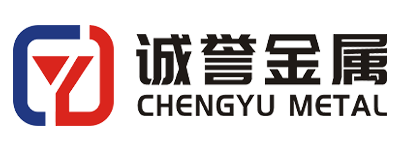Analysis on the risk of oversupply in hot-rolled coil market and research on countermeasures
Release time:
2025-06-18
1. Current status of hot-rolled coil market and analysis of overcapacity risk
At present, my country's hot-rolled coil market is facing an increasingly severe problem of overcapacity. With the continuous expansion of steel industry capacity in recent years, the supply of hot-rolled coil as a basic steel product has obviously exceeded the actual market demand. According to industry statistics, my country's hot-rolled coil capacity utilization rate has dropped to below 75% in 2023, far below the internationally recognized reasonable level.
The main reasons for the overcapacity in the hot-rolled coil market include:
Capacity expansion is too fast: In the past decade, steel companies have continuously expanded their investment in hot-rolling production lines in pursuit of economies of scale, resulting in a capacity growth rate far exceeding demand growth.
Downstream demand slowed down: The growth rate of major steel-using industries such as construction, machinery manufacturing, and automobiles has slowed down, especially under the influence of real estate regulation policies, the demand for construction steel has shrunk significantly.
Severe homogeneous competition: Most companies have similar product structures, focusing on the production of ordinary specifications of hot-rolled coils, and lack differentiated competitive advantages.
Export market is blocked: International trade protectionism is on the rise, and many countries have implemented anti-dumping measures on Chinese steel products, limiting the overseas channels for digesting excess capacity.
The direct impact of overcapacity risk is as follows: market prices continue to be sluggish, corporate profit margins are compressed, inventory pressure increases, and the overall profitability of the industry declines. If it cannot be effectively dealt with, it may lead to the break of the capital chain of some companies, and even trigger an industry crisis.
2. In-depth impact assessment of overcapacity risk of hot-rolled coils
The overcapacity in the hot-rolled coil market has had a multi-level impact on the industry ecology:
Price mechanism distortion: The imbalance between supply and demand has caused the price of hot-rolled coils to hover near the cost line for a long time. Some companies have to sell at a loss to maintain cash flow, disrupting the normal market pricing mechanism.
Corporate financial pressure: Product gross profit margins have fallen sharply, while raw material costs remain high. Steel companies generally face the dilemma of "squeezing at both ends", and their asset-liability ratios are rising.
Serious waste of resources: Excess capacity means that a large amount of equipment is idle, energy and raw materials are ineffectively occupied, resulting in a huge waste of social resources.
Insufficient innovation motivation: The deterioration of the market environment has caused companies to focus their main energy on survival issues, and R&D investment has been compressed, which is not conducive to long-term technological progress and transformation and upgrading of the industry.
Employment and social stability: If the overcapacity problem continues to worsen, it may lead to layoffs or shutdowns in enterprises, affecting local employment and economic development.
III. Systematic strategies for dealing with the overcapacity of hot-rolled coils
1. Supply-side structural reform
Capacity optimization and elimination: Strictly implement environmental protection, energy consumption, quality and other standards, and withdraw backward production capacity in accordance with laws and regulations. Establish a market-oriented and legalized capacity withdrawal mechanism to reduce inefficient production capacity through mergers and reorganizations.
Flexible production adjustment: Flexibly adjust the production rhythm according to market demand and establish a rapid response mechanism. The "production based on sales" model can be adopted to avoid blind production leading to inventory backlogs.
Equipment upgrade and transformation: Invest in intelligent and digital production lines to improve production efficiency and product quality stability, reduce unit product costs, and enhance market competitiveness.
2. Demand-side expansion and innovation
High-end product development: Transform to high-end hot-rolled coil products such as high-strength, high-corrosion resistance, and special specifications to meet the needs of high-end fields such as automotive steel and shipbuilding steel.
Application field expansion: Develop the application potential of hot-rolled coils in emerging fields such as new infrastructure, new energy equipment, and environmental protection equipment to create new market demand.
Industry chain collaboration: Establish strategic partnerships with downstream users, participate in the customer product design stage, and provide customized material solutions.
3. Market and channel optimization
Export market diversification: Develop markets in countries along the "Belt and Road" and avoid trade barriers in traditional markets. Consider building processing and distribution centers overseas to provide localized services.
E-commerce platform construction: Use steel e-commerce platforms to expand sales channels, reduce transaction costs, improve market transparency, and achieve precision marketing.
Regional market segmentation: According to the industrial development characteristics and demand structure of different regions, formulate differentiated regional marketing strategies to avoid homogeneous competition.
4. Improve management and operational efficiency
Lean production management: Introduce lean production concepts and methods to eliminate various wastes in the production process and reduce operating costs.
Refined inventory management: Establish a scientific inventory early warning mechanism, realize real-time inventory monitoring through information technology, and maintain a reasonable inventory level.
Supply chain collaboration: Establish long-term and stable cooperative relationships with upstream raw material suppliers, reduce raw material costs through centralized procurement, and enhance supply chain resilience.
IV. Long-term sustainable development path
Facing the problem of oversupply in the hot-rolled coil market, enterprises need to focus on the long term and build sustainable development capabilities:
Technology innovation system: Increase R&D investment, establish enterprise technology centers or industry-university-research cooperation platforms, and make breakthroughs in key processes and technologies.
Green and low-carbon transformation: Implement energy-saving and emission reduction technology transformation, develop environmentally friendly products, and adapt to increasingly stringent environmental protection requirements.
Talent strategy: Cultivate and introduce compound talents, especially technical talents familiar with new materials and new processes and management talents who understand the market and are good at management.
Digital transformation: Promote intelligent manufacturing, use big data, the Internet of Things and other technologies to optimize production processes, and improve the scientific nature of decision-making.
Brand building: Get rid of the low-end price competition model, establish brand advantages through product quality and services, and increase product added value.
V. Policy recommendations and industry collaboration
Solving the problem of excess hot-rolled coils requires joint efforts from the government, industry and enterprises:
Improve industry supervision: It is recommended that government departments strengthen capacity monitoring and early warning, strictly approve projects, and prevent disorderly expansion of capacity.
Establish a capacity replacement mechanism: Promote optimal capacity allocation through market-oriented means, and encourage advanced capacity to replace backward capacity.
Industry self-discipline convention: Industry associations take the lead in formulating industry self-discipline norms to avoid vicious competition and maintain market order.
Information sharing platform: Build an industry information sharing mechanism, improve market transparency, and help enterprises make scientific decisions.
Financial support policy: Provide financing support to enterprises that implement transformation and upgrading, and provide necessary financial subsidies and employee resettlement assistance for withdrawing capacity.
The overcapacity risk in the hot-rolled coil market is both a challenge and an opportunity. By actively responding, steel companies can force themselves to transform and upgrade, enhance their core competitiveness, achieve a shift from scale expansion to quality and efficiency, and ultimately promote the healthy and sustainable development of the entire industry.
Latest News




